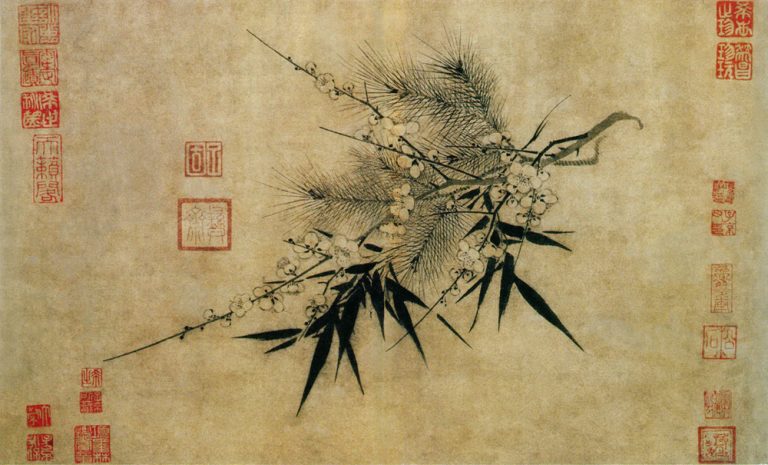A site of Marian apparition and papally-approved pilgrimage route was blockaded, yet underground believers persevere through cold and rain.
Each May since 1996, thousands of soldiers are sent to the little village of Donglu, in Baoding city, Hebei Province, a few hours’ drive from Beijing. The soldiers completely close off access to the village to ensure that no “illegal assemblies” take place.
What kind of illegal assemblies does the Chinese government fear?
In 1900, during the Boxer Rebellion (the Boxers, literally, the “Fists of Harmony and Justice,” were a Chinese secret society that led the rebellion against colonialism and Christianity that lasted from 1899 to 1901), St. Mary, the Mother of Christ, is said to have appeared in the village, under the name of Our Lady of China. A church was built following the apparition, and in the 1930s it was consecrated as the National Shrine of Our Lady of China and Pope Pius XI (1857-1939) approved it as a pilgrimage site. Pilgrimages were temporarily halted after the church was destroyed in World War II, but they resumed after a new cathedral was completed in 1992.
In 1995, Mary is said to have appeared again, this time during the annual celebrations around her feast day in May, and was witnessed by more than 30,000 people. This, apparently, was a threat to the Chinese Communist Party (CCP). The next day, police tried to close down activities around the apparition site and move pilgrims back to their buses. Beginning in 1996, each May, the government closes off every access road to the village with soldiers to prevent people from gathering. The church where underground Catholics had met was destroyed in that initial blockade of the pilgrimage in 1996.
Yet, despite more than 20 years of persecution and the destruction of their church, underground Catholics in Donglu have remained firm in their faith. The village is reported to be almost 90 percent Catholic.


Bitter Winter reporters arrived in Donglu to find hundreds of believers gathered on a street in front of a makeshift altar, where the underground priest was celebrating Mass. Braving the bitter cold, the faithful knelt in silence. The congregation included children as young as two and seniors in their eighties or nineties.
One elderly Catholic said that they had held Mass outdoors for more than 20 years, without any interruptions even during windy, rainy or snowy weather.
“After the church was demolished in 1996,” he said, “church members built a simple meeting venue. But it, too, was torn down by the government. After that, we were forced to move surreptitiously from place to place to hold Mass. We have been doing this for more than 20 years.”
Winter in northern China is particularly cold. The temperature the day our reporters arrived was minus 7 degrees Celsius (about 19 degrees Fahrenheit). Most of the crowd was shivering from standing and kneeling for an hour. When asked why they didn’t build another meeting venue, one responded, “We can’t build it. The government won’t let us. By the time it’s half-built, they will just tear it down.”


In 1937, after the Pope approved Donglu village as a national pilgrimage site, it became one of the most famous Marian devotional centers in mainland China, attracting tens of thousands of believers every year.
The authorities, however, appeared unwilling to let thousands of people gather together. In 1995, they designated the pilgrimage an “illegal assembly.” Soldiers block the entrances to the village each year to stop the faithful from coming. Local underground Catholic believers are also persecuted throughout the year. They have been forced to hold Mass outside to stay true to their consciences.
Underground Catholic believers in the neighboring Xiezhuang village have also been persecuted. The faithful there hold gatherings in makeshift shelters made of colored steel tiles, but the government often demolishes even these simple sheds.
Local Catholics led us to a simple and crude meeting venue. Believers had erected a shed in the corner of an old abandoned building, with no fabric surrounding it to protect against the wind and rain. With temperatures regularly less than minus 10 degrees Celsius (about 14 degrees Fahrenheit), adults and children alike have to wear layers of warm clothing to attend Mass.


“Even the simple venue here has been torn down many times,” one believer said helplessly. “If we rebuild it, it won’t be long before the government tears it down again.”
Despite such a harsh environment, these underground believers are unwilling to obey the CCP and join the Chinese Patriotic Catholic Association (CPCA).


One CPCA priest in Donglu village revealed that, since the Vatican-China deal of 2018 was signed, any church that does not join the state-controlled CPCA will be shut down – an interpretation of the provisional agreement that the Chinese authorities persist on. Those priests and bishops who the government regards as disobedient are likely to face arrest and imprisonment.
He advised the priests and believers of underground churches, “Nowadays, everyone is struggling for survival in these chaotic times. Whether above-ground or underground, as long as the government lets us worship God, that is enough.”
The Underground Catholic Church does not agree with such remarks. One underground priest told us, “What does it mean to ‘not believe’? What does it mean to ‘believe’? If people just wanted to endure a feeble existence, then there wouldn’t have been so many martyrs since ancient times.”
Reported by Shen Xinran









